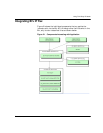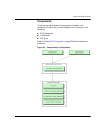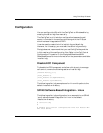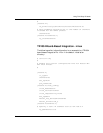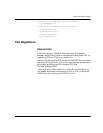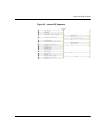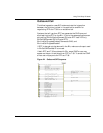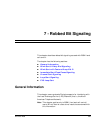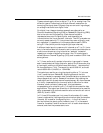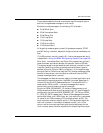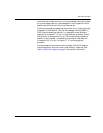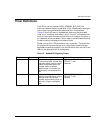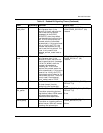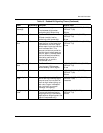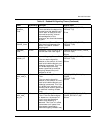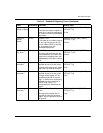
General Information
November 2009 265
These protocols apply either to digital (T1 or E1) or analog lines. The
different types of lines simply provide a different mechanism for
conveying the signal-electric signals (loop current and ring voltage)
on analog lines and bits on digital lines.
On digital lines, these protocols are sometimes referred to as
Channel Associated Signaling (CAS) or Robbed-Bit Signaling (RBS)
due to the nature of the signaling. Each channel's state is
represented as a set of 2 signaling bits, and these bits are
transmitted on the line at constant intervals. The LEC protocols are
normally associated with T1 lines, where they were originally used,
but nowadays it is possible to find these protocols used in PBX's
using E1 lines (which provide 4 signaling bits per channel).
A different technique is to reserve a full channel on a T1 or E1 line to
carry information about all channels, and to use the available bits as
a continuous stream carrying information “packets” instead of
repeating a number of signaling bits over time. This technique is
called Common-Channel Signaling (CCS), and is used on ISDN lines
among others.
In T1 lines, audio and line state information is grouped in frames,
each frame consists of 8 bits of data for each of the 24 channels, plus
a framing bit, adding to 193 bits/frame (8 bits/byte * 1 byte/channel *
24 channels/frame + 1bit). The sampling rate is 8000 Hz, so the bit
rate is 8000x193=1,544,000, or 1.544 Mb/s.
The technique used for carrying the signaling bits on T1 is to use
(“rob,” hence the term Robbed-Bit Signaling) some of the bits
normally intended to represent data (voice/fax/data) on a channel for
the purposes of call control. Research has shown that robbing the
least significant bit of each channel's sample every 6th frame causes
a virtually imperceptible (for humans) level of distortion for voice.
However, when raw data is being sent, this loss becomes
unacceptable, so for simplicity only 7 of the 8 bits are used for data
applications. This technique allows for all 24 channels to be used for
calls, as opposed to 23 channels used for calls and one for call control
(23B+D), as with ISDN.
In E1 lines (32 timeslots per line), one of the timeslots (0) in each
frame is reserved for framing and synchronization data, and another
(timeslot 16) is used for the signaling bits — in the first frame it
carries information about audio timeslots 1 and 17, in the second
frame for timeslots 2 and 18 and so on until all audio channels are
covered, and then the process starts over.



